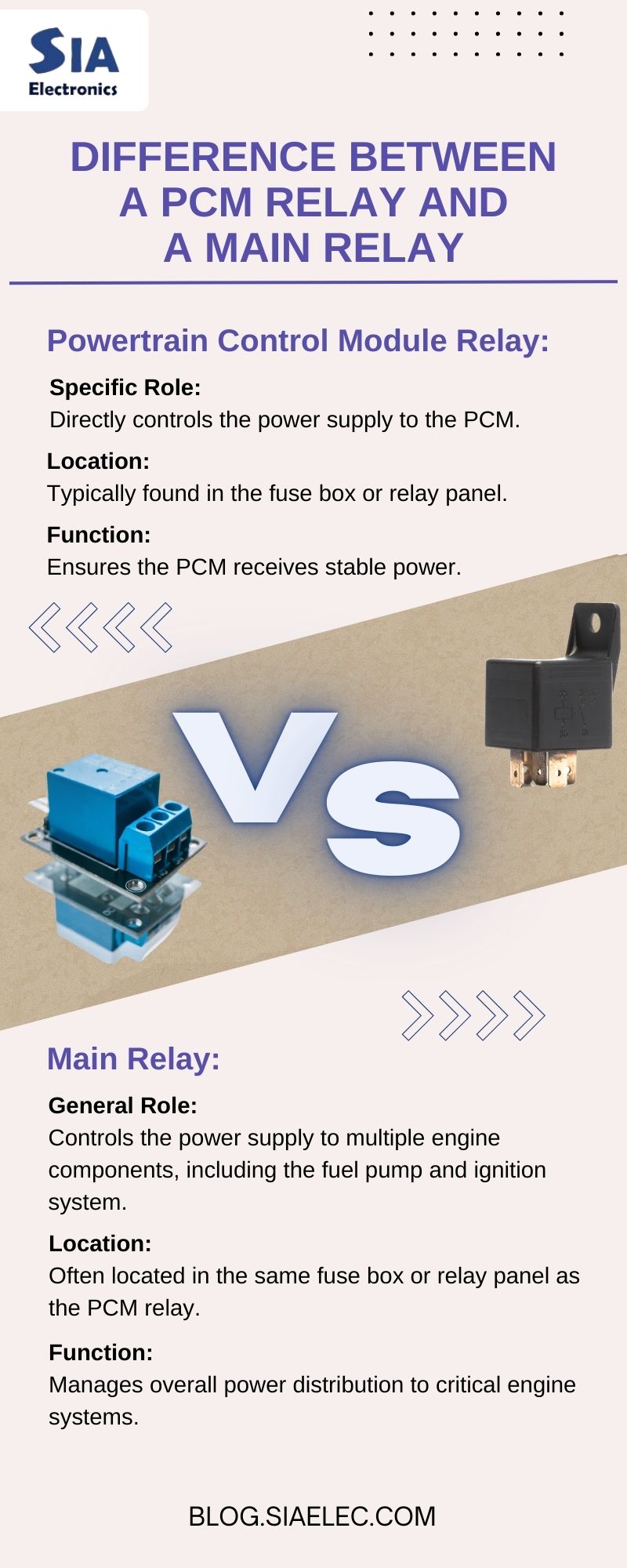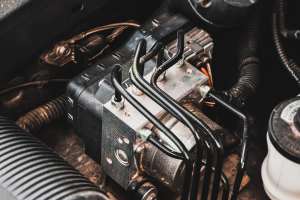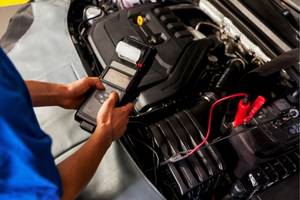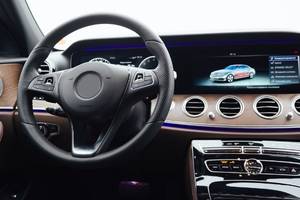Table of Contents
Introduction
The powertrain control module (PCM) is the heart of a vehicle's engine management system, controlling various functions that ensure optimal performance. Integral to this system is the powertrain control module relay (PCM relay). Understanding what a PCM relay is, how it functions, and the implications of a faulty relay is crucial for vehicle maintenance and troubleshooting. In this blog, we’ll delve into the specifics of the PCM relay, explore its function, and provide insights into its role in engine performance.
What is a Powertrain Control Module Relay?
A powertrain control module relay is an electrically operated switch that controls the power supply to the PCM. This relay acts as a gatekeeper, ensuring that the PCM receives the appropriate voltage and current to function correctly. It is typically located in the fuse box or relay panel of a vehicle.
Key Points:
- Function: It helps regulate the power supply to the PCM.
- Location: Usually found in the fuse box or relay panel.
- Importance: Essential for the proper operation of the vehicle’s engine management system.
What is the Function of a Powertrain Control Module Relay?
The primary function of a PCM relay is to control the flow of electrical power to the powertrain control module. By doing so, it ensures that the PCM receives a stable and adequate power supply, which is vital for the effective management of engine functions and performance.
Functions Include:
- Power Regulation: Provides consistent power to the PCM.
- System Control: Acts as a switch to control the PCM’s power supply based on engine conditions and needs.
- Protection: Protects the PCM from voltage fluctuations and electrical failures.
Can a Faulty Powertrain Control Module Relay Affect Engine Performance?
Yes, a faulty PCM relay can significantly impact engine performance. Since the PCM relies on the relay for a stable power supply, any issues with the relay can lead to various engine problems.
Potential Issues Include:
- Engine Stalling: Intermittent or complete loss of power to the PCM can cause the engine to stall or fail to start.
- Poor Performance: The engine may run poorly or experience reduced power and efficiency.
- Error Codes: A malfunctioning relay can trigger diagnostic trouble codes (DTCs) related to engine performance.
Replacing a PCM fuse is a relatively straightforward task that requires a few basic tools. Here’s what you’ll need:
Tools Required:
- Fuse Puller: A specialized tool for safely removing fuses from the fuse box.
- Multimeter: To test the continuity and ensure the new fuse is functioning correctly.
- Replacement Fuse: Ensure you use the correct fuse type and rating as specified by the vehicle’s manufacturer.
- Screwdrivers: For accessing the fuse box if necessary.
Steps:
- Locate the Fuse Box: Find the fuse box or relay panel where the PCM fuse is located.
- Remove the Faulty Fuse: Use the fuse puller to remove the old fuse.
- Install the New Fuse: Insert the new fuse into the appropriate slot.
- Test: Use a multimeter to verify the new fuse is working correctly.
Difference Between a Powertrain Control Module Relay and a Main Relay
While both the powertrain control module relay and the main relay are crucial for vehicle operation, they serve different functions.
Powertrain Control Module Relay:
- Specific Role: Directly controls the power supply to the PCM.
- Location: Typically found in the fuse box or relay panel.
- Function: Ensures the PCM receives stable power.
Main Relay:
- General Role: Controls the power supply to multiple engine components, including the fuel pump and ignition system.
- Location: Often located in the same fuse box or relay panel as the PCM relay.
- Function: Manages overall power distribution to critical engine systems.
Conclusion
Understanding the powertrain control module relay is essential for maintaining and troubleshooting modern vehicles. This crucial component ensures that the PCM receives a stable power supply, which is vital for optimal engine performance. Recognizing the signs of a faulty relay, knowing how to replace a PCM fuse, and understanding the differences between relays can help you effectively manage your vehicle's engine system. For expert assistance with automotive electronics, including PCM relays and fuses, S.I.A. Electronics offers over 20 years of experience in re-manufacturing automotive electronic control modules and other essential components.
FAQs on
What is a Powertrain Control Module Relay : Step-by-step Guide
-
1. What is the role of the powertrain control module relay in a vehicle?
Ans.
The powertrain control module (PCM) relay plays a crucial role in controlling the power supply to the PCM. It acts as an electrically operated switch that ensures the PCM receives a stable and adequate power supply, which is essential for managing engine functions and overall vehicle performance.
-
2. How can I identify if my powertrain control module relay is faulty?
Ans.
Symptoms of a faulty PCM relay include engine stalling, poor engine performance, or difficulties starting the vehicle. If the PCM relay is malfunctioning, it may also trigger diagnostic trouble codes (DTCs) related to engine performance issues.
-
3. What are the steps involved in replacing a PCM fuse?
Ans.
To replace a PCM fuse, you need a fuse puller, a multimeter, a replacement fuse, and possibly screwdrivers. First, locate the fuse box, remove the old fuse using the fuse puller, insert the new fuse, and then use a multimeter to ensure the new fuse is functioning correctly.
-
4. Can a faulty powertrain control module relay affect other vehicle systems?
Ans.
While the PCM relay specifically controls the power supply to the PCM, its failure can lead to broader issues such as engine stalling or poor performance. This may indirectly affect other vehicle systems that rely on the PCM for proper operation.
-
5. What is the difference between a powertrain control module relay and a main relay?
Ans.
The powertrain control module relay specifically controls the power supply to the PCM, while the main relay manages power distribution to multiple engine components, including the fuel pump and ignition system. Both are typically located in the fuse box or relay panel but serve different roles.
-
6. Why is it important to ensure a stable power supply to the powertrain control module?
Ans.
A stable power supply is crucial because the PCM relies on it to effectively manage engine functions and vehicle performance. Fluctuations or interruptions in power can lead to engine problems, reduced performance, and operational issues.



